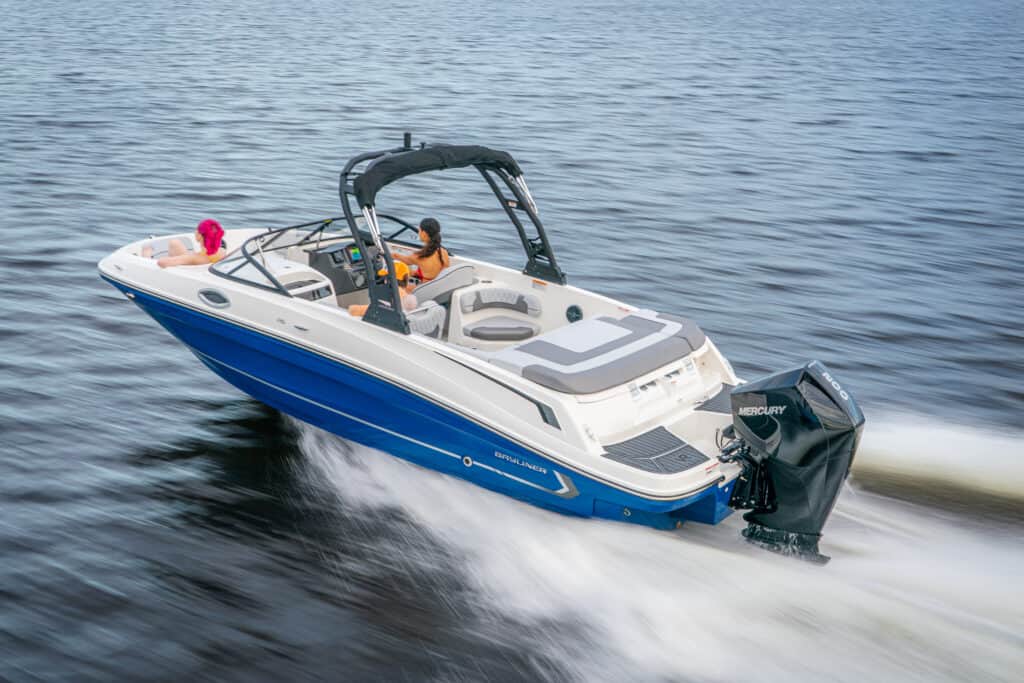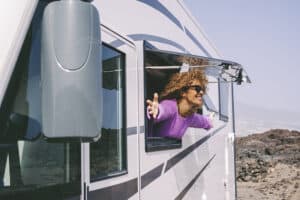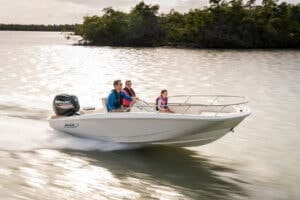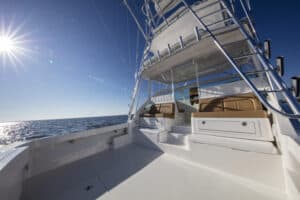Boating can be a lot of fun. It can genuinely enhance your life in so many ways. You can enjoy all of the benefits of being outdoors, on the water, and you can explore places that aren’t possible with a car or on foot. Boating also lets you carve out time for family and friends, can be pet friendly, and is a great way to make memories. You can also enjoy your favorite leisure activities such as fishing, reading, sunbathing, waterskiing, or tubing.
If you’re ready to get a boat of your own, check out our boat loan calculator to see how much boat you can afford and what your approximate monthly payments will be. Check current boat loan rates here. Then apply for a boat loan with Trident Funding and get approved as quickly as 48 hours later.
Boating has so many positive aspects, but it can also be dangerous if not done correctly. Each country has their own governing body when it comes to boating rules and regulations, but in the U.S. the Coast Guard reigns supreme. We’re going to get into some of the Coast Guard boat requirements, how to stay safe, and the importance of personal flotation devices. We’re also going to delve into visual distress signals, navigation rules, and what equipment is required to have onboard.
Coast Guard Boat Requirements
Coast Guard boat requirements vary depending on the type of boat you have, the number of passengers onboard, and the size of the boat. These requirements give you a guideline of what safety precautions need to be taken and what is legally required under federal law. However, some states may have stricter requirements, so be sure to check out both the Coast Guard requirements and your state’s boating requirements.
The boat owner and vessel operator are responsible for adhering to the Coast Guard boat requirements and for maintaining a safe boating experience for everyone involved. Keep in mind that the boating requirements that we mention apply to recreational boats. Commercial boats may have different Coast Guard boat requirements they need to adhere to.
If you’re purchasing a boat, and need someone to help you obtain a loan, get Coast Guard documentation, and guide you through the closing process, contact Trident Funding. We’re a long standing leader in the marine financing industry and can get you out on the water without doing any of the heavy lifting.
Equipment Requirements
Coast Guard boat requirements also known as carriage requirements are typically categorized by the size of the boat: under 16 feet, 16 to 26 feet, 26 feet to under 40 feet, 40 feet to under 65 feet, and then 65 feet and over. The same basic equipment is needed for each vessel size, but there are some variations, and slight differences in the number of required items based on the boat’s size. Regulations may change from year to year, so it’s always a good idea to stay up to date on the new requirements both federally and in your state.
Assuming you own a boat that is 40 feet to under 65 feet, you’re required to carry:
- Lifejackets: Also called personal flotation devices (pfds) for every person on board including anyone that you’re towing on skis or a tube, etc., are required. You also need to provide the appropriate size for everyone on board. For example, if you know an infant will be on board, they will require a different size device than an adult. These personal flotation devices must be in serviceable condition and properly stored. You also must carry one throwable flotation device. All flotation devices must be USCG (U.S. Coast Guard) approved.
- Fire extinguisher: Fire extinguishers must be USCG approved and in serviceable condition. At least three B-I type approved hand-held portable fire extinguishers and at least one B-I plus one B-II type approved hand-held portable fire extinguisher are required.
- Visual distress signal: Typically required on all boats over 16 feet, and only required on boats under 16 feet if you will be operating between sunset and sunrise. Some types of visual distress signals include parachute flares, red handheld flares, red meteors, orange smoke signal, floating orange smoke signal, and electric distress light. They’re intended to alert someone to your distress and should be reserved for emergency situations. Keep in mind that they’re only helpful if someone sees them. Use them if you’re close to shore or see a boat or an airplane.
- Sound producing device: All vessels over 40 feet must have a bell and a whistle that functions, produces a sound, and can be heard at least half a nautical mile away.
- Backfire flame control: This isn’t required for outboard motors, but all other types of motors must have one approved device on each carburetor of a gas engine.
- Ventilation: All boats must have proper ventilation with at least two ventilation ducts. The purpose of this is to properly ventilate spaces where gasoline may linger from the engine. The specifications of the duct requirement depend on when the boat was built.
- Navigation lighting and rules: Navigation lights must be displayed on all vessels between sunset and sunrise. These lights are also required to be turned on during fog, heavy rain, and reduced visibility. This is similar to when you would turn on your car’s headlights. A navigation rule book is also required to be on board all vessels that are over 40 feet long.
Some additional equipment that isn’t necessarily required, but is recommended includes:
- Raincoats, wetsuits, and other weather apparel and gear
- Extra non perishable food and fresh water for everyone on board
- Additional fuel
- A longer anchor chain if you plan on being in deeper waters
- Some type of sun protection
- A tool kit
- A set of oars; if applicable
- First aid kits
- Lightning detectors and grounds
- Phone charger that doesn’t require electricity
- Buoyant personal locator beacon that has a display with GPS coordinates
- A DSC equipped VHF radio that has been registered with a free MMSI number so you can push the red button and everyone within radio range will receive a distress message
- Extra medication for anyone on board who regularly takes it
It’s always better to be prepared and have some extra equipment stowed away and never use it, than to run into an emergency and not have the supplies that you need.
Navigation Rules
Navigation rules are broken down into two categories: inland and international. They’re set to create safe waterways and prevent as many accidents as possible. These are like road rules for boats and are the responsibility of the boat operator to follow.
Some navigation rules include:
- Maintain a safe speed
- Take actions to avoid a collision
- Post a lookout
- Correctly cross, overtake, and meet vessels that you encounter on the waterways
- Look out for navigational aids such as lighthouses and buoys but don’t rely on them
- Know the meaning of all regulatory markers, lateral aids, and safe water markers
- Use nautical charts, depth finders, and GPS devices to safely maneuver and navigate your vessel
- Maneuver as directed by law enforcement or a Coast Guard vessel
- Don’t negligently operate your boat: this includes not drinking and boating
- Report all accidents, injuries, and missing people
- Render assistance to anyone who is in danger at sea, as long as it is reasonably safe for you to do so.
Safety Tips
Now you know more about Coast Guard boat requirements, but it’s still important to keep some additional safety tips in mind. Always always always check the forecast before heading out on your boat. If winds are picking up or there’s a chance of a storm it’s best to take the boat out another day. Take a boating safety course to learn more about safely operating a vessel, especially if you’re new to the boating world. Check your boat before departing and make sure the fuel tank is full, you have all the necessary provisions, and that your boat is in proper operational condition. It’s also a good idea to give someone your ‘float plan’ which just means that someone on shore knows where you’re headed and what approximate time you plan to return. Always be alert, never drive a boat intoxicated, and never drive a boat aggressively. Lastly, know your boat! Know how to operate it, where all of your equipment is stored, and have an emergency plan in place.
Documentation Requirements
U.S. recreational vessels are required to be registered either through their state or federally, but not both. Some exemptions apply, such as if your vessel is under 16 feet and non-motorized, or if you only use your vessel on a private lake or waterway. State registration criteria vary, as do registration costs, but you will generally need to provide proof of ownership and if you have a lien holder. If you register through your state, you will receive a state-issued certificate of number.
If you register federally, your vessel will receive Coast Guard documentation. This is an option for boats that are over five net tons and are used recreationally. It’s required for boats that are used for commercial purposes and boats that are used in fishing and trade activities in certain coastal waters surrounding the U.S.
Some recreational boat owners choose to get USCG documentation if they plan to take their boat in international waters because this documentation is known worldwide and makes entering foreign waters less of a hassle. If you finance your boat, some lenders may also require Coast Guard documentation.
If you need help with your U.S. Coast Guard documentation, contact Trident Funding. We can help you cruise through the loan application and approval process, assist with USCG documentation, and help seamlessly steer you through the entire closing process.
The Wrap Up: Coast Guard Boat Requirement
Boating is an amazing pastime, a great way to see the world, and can provide so many physical, mental, and emotional benefits. However, boating should be done safely and legally and it’s important to follow all U.S. Coast Guard boat requirements. Keep up to date on changing equipment requirements and remember to reach out to your local state boating authority to find out more specific requirements in your state.
Frequently Asked Questions on Coast Guard Boat Requirements
What does the U.S. Coast Guard Require on a Boat?
The USCG has different requirements depending on the type, size, and use of the boat. Your state may have more stringent requirements as well. However, the following are pretty standard federal equipment requirements:
- Coast Guard approved flotation devices
- Fire extinguishers
- Visual distress signals
- Sound producing device
- Backfire flame control
- Ventilation
- Navigation lighting and a navigation rulebook
Does the Coast Guard Require Flares for Boats?
Flares are one of the types of visual distress signals and are part of your boat’s emergency safety equipment. Boats under 16 feet require visual distress signals only when operating from sunrise to sunset. All boats over 16 feet, require visual distress signals to be on board at all times. There are different types of flares, some pyrotechnic, and others that are not. It’s important to check that you have them on board, check that they are functional, and check their expiration dates before leaving the shore. Keep in mind that they should only be used in an emergency and are only effective if someone spots them.
Are Lifejackets Required on Boats?
Personal flotation devices that meet Coast Guard standards are required on all vessels. There needs to be at least one Coast Guard approved device for each person that is on board. The device must be suitable for the passenger, such as a child, infant, or adult sized lifejacket. The devices must be in usable serviceable order and must be easily accessible. A flotation device that can be thrown off the boat is also required on all recreational vessels.





